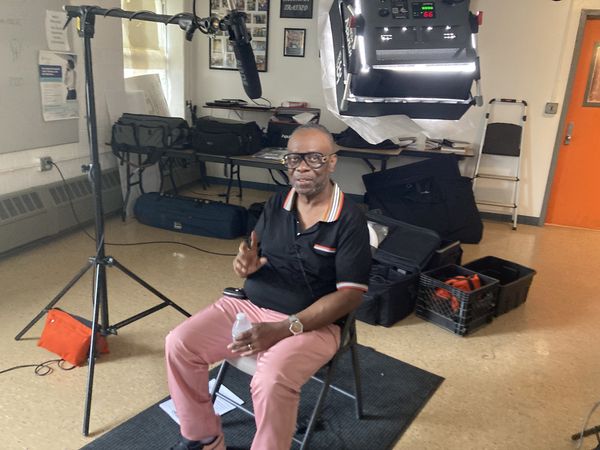Written by Robert Rose
"Why do we conduct oral histories about incarceration? What is the significance of bringing these stories to light?” These are questions we ask internally at the Sing Sing Prison Museum as we plan to launch excerpts from oral history interviews; we have conducted this work over the past few years. We wanted to frame the videos and audio recordings in a light that would help audiences see the value of oral histories as a part of the archive, and the way a museum can be part of the work in the justice fields. We take inspiration from fellow nonprofit StoryCorp whose mission supports the idea that everyone has a story worth telling to “illuminate the humanity and possibility in us all.” What started as a tradition around the campfire has certainly changed and expanded in the digital landscape.
Oral histories are crucial for contemporary museums since they offer first-hand accounts of events and experiences that may not be found in written records or other forms of documentation. When it comes to the US carceral system, oral histories can provide valuable insights into the experiences of incarcerated individuals, their families, and communities.
The Sing Sing Prison Museum builds understanding for our audiences using these firsthand accounts to show how the criminal legal system impacts individuals, and why reform is necessary. By collecting and sharing stories, museums help preserve the voices of those excluded from mainstream narratives. Oral histories can be a powerful tool in preserving the stories of marginalized individuals.
Our oral history project provides valuable insights into the experiences of those affected by the carceral system. Additionally, here at the museum, we can enhance the visitor’s experience by utilizing audio and video recordings to support other materials. This approach can lead to a visitor’s deeper understanding and empathy, but it also could lead to someone being inspired to volunteer, give money, or take action to improve opportunities for those inside and returning.
Oral histories play a vital role in museums. They help to narrate incarceration and reform, both past and present. These stories are crucial in bringing people together to imagine and create a more just and equitable society. They can also help in developing a more comprehensive and nuanced understanding of the issues surrounding mass incarceration, particularly for those who have been impacted by the US carceral system.
Oral histories are crucial for contemporary museums since they offer first-hand accounts of events and experiences that may not be found in written records or other forms of documentation. When it comes to the US carceral system, oral histories can provide valuable insights into the experiences of incarcerated individuals, their families, and communities.
The Sing Sing Prison Museum builds understanding for our audiences using these firsthand accounts to show how the criminal legal system impacts individuals, and why reform is necessary. By collecting and sharing stories, museums help preserve the voices of those excluded from mainstream narratives. Oral histories can be a powerful tool in preserving the stories of marginalized individuals.
Our oral history project provides valuable insights into the experiences of those affected by the carceral system. Additionally, here at the museum, we can enhance the visitor’s experience by utilizing audio and video recordings to support other materials. This approach can lead to a visitor’s deeper understanding and empathy, but it also could lead to someone being inspired to volunteer, give money, or take action to improve opportunities for those inside and returning.
Oral histories play a vital role in museums. They help to narrate incarceration and reform, both past and present. These stories are crucial in bringing people together to imagine and create a more just and equitable society. They can also help in developing a more comprehensive and nuanced understanding of the issues surrounding mass incarceration, particularly for those who have been impacted by the US carceral system.



 RSS Feed
RSS Feed